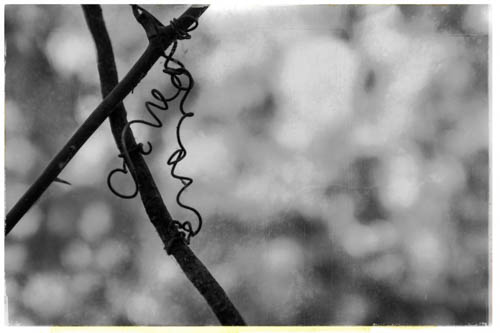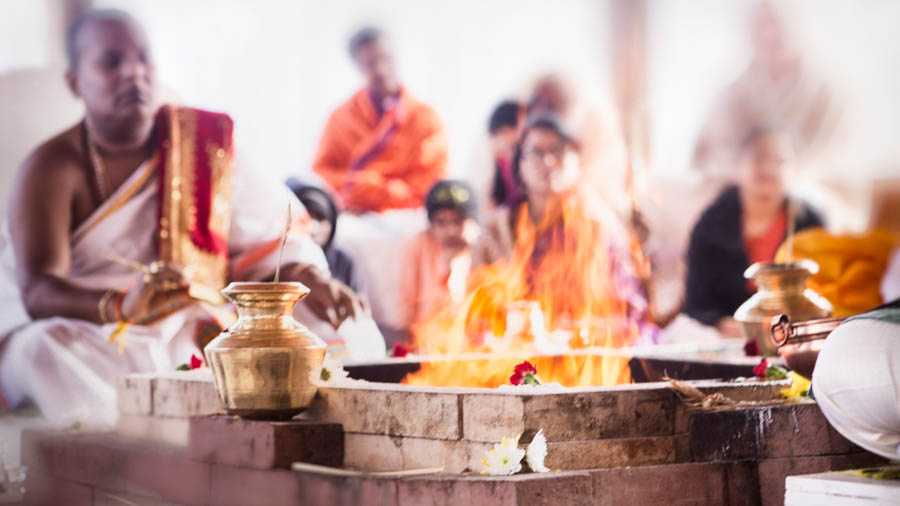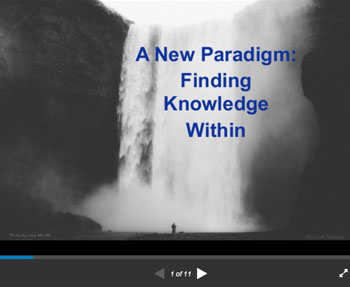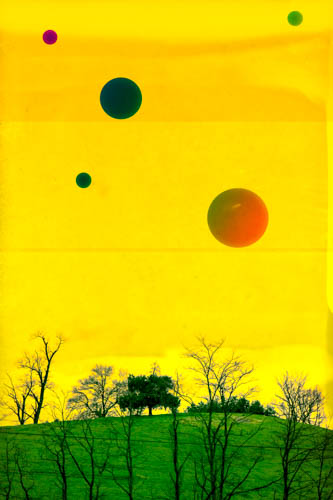by Michael Mamas | Monday, May 16, 2016 | The Veda |
 Letters on a white page are defined by the shape of the letters. They are also defined by the white surrounding the letters. Similarly, Smriti defines the Pureshea aspects of Vedic Knowledge. So it is reasonable to call all things Pureshea (Vedangas for example) Smriti. Or is it? Is the white background the letters? Or are the letters the letters?
Letters on a white page are defined by the shape of the letters. They are also defined by the white surrounding the letters. Similarly, Smriti defines the Pureshea aspects of Vedic Knowledge. So it is reasonable to call all things Pureshea (Vedangas for example) Smriti. Or is it? Is the white background the letters? Or are the letters the letters?
The structure of the Veda is like a crystal. It is like a house of mirrors. Everything is seen in everything else. Does the reflection carry the meaning? Is the reflection more the mirror than the mirror is? Of course, we must not take the analogy of the mirror too far. However, it does, I believe give a feeling for the structure of existence. All aspects of existence are mirror images of one and other. Existence can be viewed as a magnificent crystal.
Smriti is fascinating.
© Michael Mamas. All rights reserved.
by Michael Mamas | Saturday, April 30, 2016 | The Veda |
Some yogis perform yagya merely by worshipping the gods,
others by offering the yagya itself into the fire that is Brahman.
_______
This is not a deliberate act… it is the natural result of a level of consciousness… ‘offering…into the fire’ is figurative. In the state of enlightenment, everything is ‘offered into the fire’… every thought, every act, every moment.

© Michael Mamas. All rights reserved.
by Michael Mamas | Thursday, April 14, 2016 | The Veda |
 Here is another quote from the movie, ‘The Matrix.’
Here is another quote from the movie, ‘The Matrix.’
“Unfortunately no one can be told what the Matrix is. You have to see it for yourself.”
The Transcendental Level can not be conveyed. Even those who read all about it and even dedicate their lives to it do not know it, lest they have seen it for themselves.
I do wonder if the parallels between Vedanta and the movie were intentional or not. If not, I feel they certainly were inspired by the deep inner sense of that which dwells deep within every individual… the Self. We all sense it. We all know about it. But few see it for themselves.
To ‘know thy Self’ is to know all that is. I likewise wonder about the Ancient Greek Aphorism: “Know Thyself.” Who among them knew, as said in the Matrix, ‘how deep the rabbit hole goes’?
© Michael Mamas. All rights reserved.
by Michael Mamas | Monday, April 11, 2016 | Announcements, Spiritual Evolution, The Veda |
 The current scientific paradigm has and will continue to serve humanity well. But it is time for science to make room for a new paradigm.
The current scientific paradigm has and will continue to serve humanity well. But it is time for science to make room for a new paradigm.
Check out my latest slideshow on SlideShare:
“A New Paradigm: Finding Knowledge Within“.
© Michael Mamas. All rights reserved.
by Michael Mamas | Monday, April 4, 2016 | The Veda |
 I think the movie, The Matrix, works so well because (intentionally or not) it relates to Vedanta so nicely. People have even said that when they got up and walked out after the movie, they really felt like they were experiencing everything as Maya (Maya=illusion=the Matrix).
I think the movie, The Matrix, works so well because (intentionally or not) it relates to Vedanta so nicely. People have even said that when they got up and walked out after the movie, they really felt like they were experiencing everything as Maya (Maya=illusion=the Matrix).
1. “The Matrix can’t tell you who you are.”
Comment: The Matrix is the Maya called relative existence. Vedic Knowledge explains that who and what you truly are transcends relativity, transcends Maya.
2. I believe it was Trinity that said, “The Matrix isn’t real,” to which the traitor in the group responded, “I disagree.”
Comment: Though relativity is illusion, even once people become aware of its nature and have seen beyond the illusion, they often turn their back on Knowledge and lose themselves once again to the illusion. Deep inside, everyone knows Truth, though it is hidden beneath their identity with relativity (identity with the illusion). For that reason, when they hear Vedantic Knowledge, it can resonate deep within them. Many times after hearing my lectures, individuals have come up to me and said, “I’ve been looking for this my whole life. I always knew something like this had to be true. I will never miss another lecture or retreat again.” Then they walk out the lecture hall door, never to be seen again. Identity with relativity has a strong grip on people’s awareness. Even when offered the red pill of Knowledge, they opt for the blue pill of oblivion.
3. “There’s a difference between knowing the path and walking the path.”
Comment: All too often, people study spirituality and decide they know all about it. They may even consider themselves to be scholars, gurus, or even enlightened. In reality, they simply ‘know the path.’ However ‘walking the path’ is not about moods, attitudes, philosophies, or intellectual or emotional experiences. ‘Walking the path’ is a state of physiology cultivated over time. There’s a big difference between knowing all about and embodying.
© Michael Mamas. All rights reserved.
 Letters on a white page are defined by the shape of the letters. They are also defined by the white surrounding the letters. Similarly, Smriti defines the Pureshea aspects of Vedic Knowledge. So it is reasonable to call all things Pureshea (Vedangas for example) Smriti. Or is it? Is the white background the letters? Or are the letters the letters?
Letters on a white page are defined by the shape of the letters. They are also defined by the white surrounding the letters. Similarly, Smriti defines the Pureshea aspects of Vedic Knowledge. So it is reasonable to call all things Pureshea (Vedangas for example) Smriti. Or is it? Is the white background the letters? Or are the letters the letters?

 Here is another quote from the movie, ‘The Matrix.’
Here is another quote from the movie, ‘The Matrix.’
 I think the movie, The Matrix, works so well because (intentionally or not) it relates to Vedanta so nicely. People have even said that when they got up and walked out after the movie, they really felt like they were experiencing everything as Maya (Maya=illusion=the Matrix).
I think the movie, The Matrix, works so well because (intentionally or not) it relates to Vedanta so nicely. People have even said that when they got up and walked out after the movie, they really felt like they were experiencing everything as Maya (Maya=illusion=the Matrix).